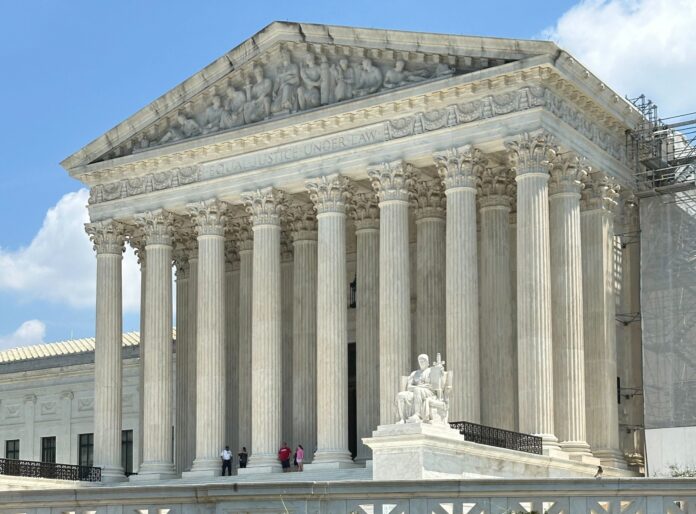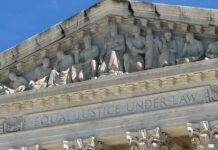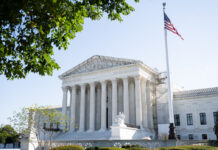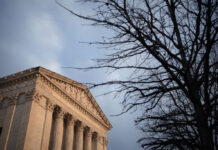OPINION ANALYSIS
on Jun 26, 2024
at 4:52 pm
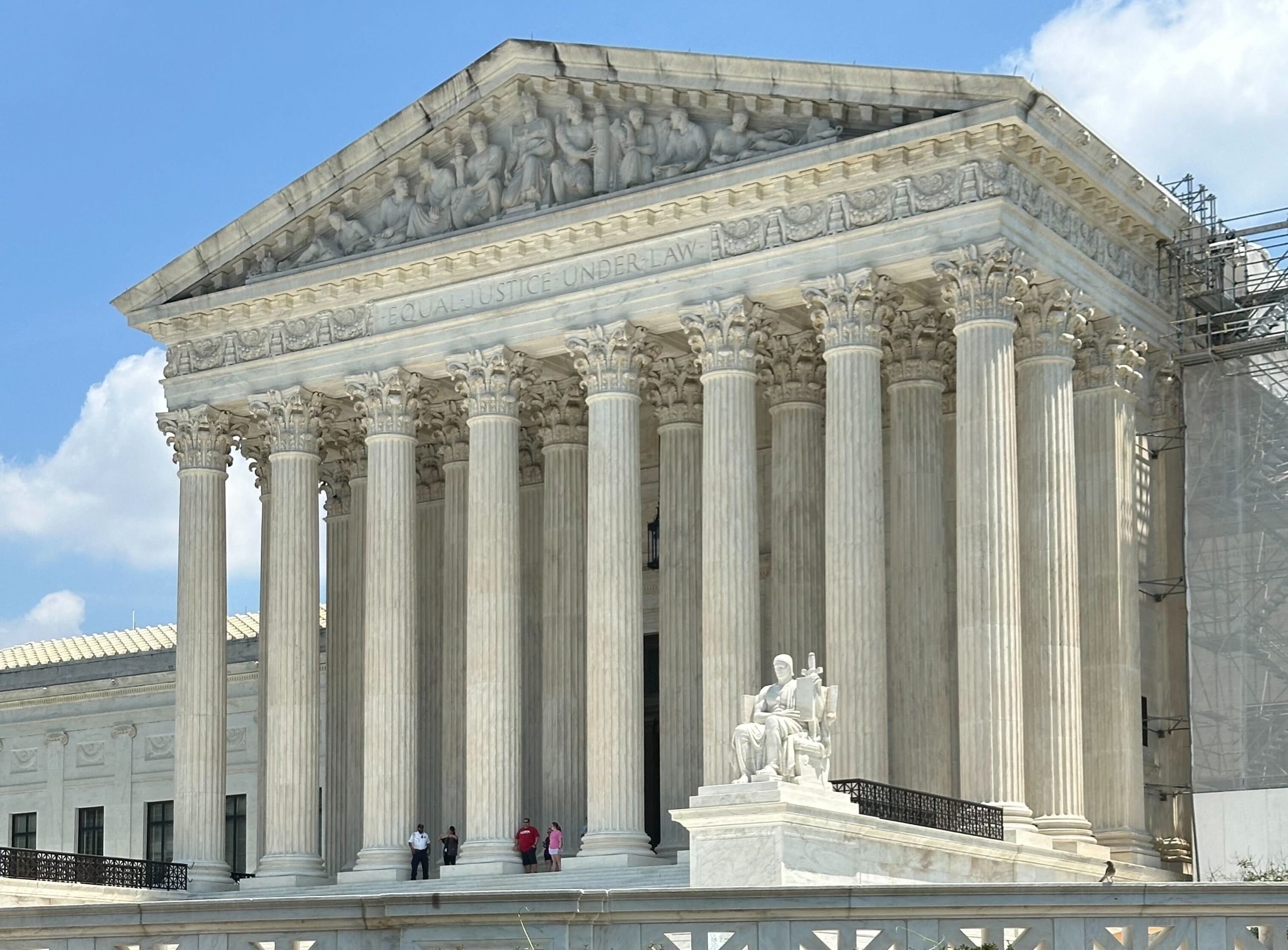
The justices ruled in Murthy v. Missouri on Wednesday. (Katie Barlow)
The Supreme Court on Wednesday threw out a lawsuit seeking to limit the government’s ability to communicate with social media companies about their content moderation policies. By a vote of 6-3, the court ruled that that the plaintiffs did not have a legal right, known as standing, to bring their lawsuit.
Writing for the majority, Justice Amy Coney Barrett cited the lack of any “concrete link†between the restrictions that the plaintiffs complained of and the conduct of government officials – and in any event, she concluded, a court order blocking communication between government officials and social media companies likely would not have any effect on decision-making by those platforms, which can continue to enforce their policies.
Justice Samuel Alito dissented, in an opinion joined by Justices Clarence Thomas and Neil Gorsuch. Suggesting that the case could be “one of the most important free speech cases to reach†the Supreme Court “in years,†Alito would have ruled both that the plaintiffs had standing to bring their lawsuit and that “the White House coerced Facebook into censoring†at least one plaintiff’s speech.
The lawsuit centers on “jawboning,†a term used to describe informal efforts by government officials to persuade someone outside the government to take action. In this case, the plaintiffs – two states with Republican attorneys general and several individuals whose social media posts were removed or downgraded – challenged the Biden administration’s efforts in 2021 to restrict misinformation about the COVID-19 vaccine. They argued that the administration’s actions had violated social media users’ rights to free speech.
A federal judge in Louisiana ruled for the plaintiffs. U.S. District Judge Terry Doughty agreed that federal officials had violated the First Amendment by “coercing†or “significantly encouraging†social media platforms’ content moderation decisions. Doughty issued an order that limited the extent to which the White House and several other government agencies could communicate with social media platforms.
The U.S. Court of Appeals for the 5th Circuit largely upheld that ruling, prompting the Biden administration to ask the Supreme Court to intervene. The justices put Doughty’s order on hold while they reviewed the dispute.
In a 29-page decision, the Supreme Court on Wednesday reversed the decision by the court of appeals and sent the case back for further proceedings. Because the plaintiffs were seeking an order limiting future communications between government officials and social media platforms, Barrett explained, the plaintiffs’ lawsuit could only go forward it they could show “a substantial risk that, in the near future, at least one platform will restrict the speech of at least one plaintiff in response to the actions of at least one Government defendant.†Here, she stressed, “that is a tall order.â€
The plaintiffs’ main argument for standing, Barrett observed, is that government officials were responsible for restrictions placed on them by social media platforms in the past, and that the platforms will continue – under pressure from government officials – to censor their speech in the future.
The court of appeals, Barrett noted, “approached standing at a high level of generality†in reaching the conclusion that the plaintiffs had established a sufficient link between the officials’ conduct and the plaintiffs’ injuries. According to the court of appeals, she explained, social-media platforms deplatformed or downgraded the plaintiffs’ posts to avoid retribution from the government if they refused to comply with the government’s wishes. But that is an “overly broad assertion,†Barrett countered, because – even if government officials sometimes influenced content-moderation decisions – “the platforms moderated similar content long before any of the Government defendants engaged in the challenged conduct.â€
Turning to the plaintiffs’ allegations at a more granular level, Barrett explained that most of those claims generally did not create the kind of connection needed to establish standing. The strongest showing, she continued, came from Jill Hines, a health-care activist who is the co-director of a group that advocated against COVID-19 vaccine mandates and mask mandates. Although Facebook took various actions with regard to social media posts by Hines and her group, including restricting her account after she posted an article about increased rates of myocarditis in teenagers who received the COVID-19 vaccine, Barrett acknowledged, “Facebook was targeting her pages before almost all of its communications with the White House and the CDC, which weakens the inference that her subsequent restrictions are likely traceable to ‘government-coerced enforcement’ of Facebook’s policies.â€
But even if Hines had shown that her injuries could be attributed to the government’s conduct, Barrett continued, even she could not show that she is likely to be harmed again in the future by that conduct. “By August 2022, when Hines joined the case,†Barrett wrote, “the officials’ communications about COVID-19 misinformation had slowed to a trickle.†And it is therefore “no more than conjecture†to project that Hines will be harmed by content moderation attributable to the federal government again, Barrett concluded. This is particularly true, Barrett added, when “the available evidence indicates that the platforms have enforced their policies against COVID-19 misinformation even as the Federal Government has wound down its own pandemic response measures.â€
Barrett quickly dismissed the plaintiffs’ arguments that they also have standing due to their right to read content by other speakers on social media. “This theory,†Barrett wrote, is “startlingly broad,†because it would allow virtually all users of social media to bring a lawsuit to challenge censorship of someone else. “This Court,†Barrett stressed, “has never accepted such a boundless theory of standing.â€
In his dissent, Alito contended that the “most important role†for freedom of speech “is protection of speech that is essential to democratic self-government and speech that advances humanity’s store of knowledge, thought, and expression.†The speech at the center of this case, Alito insisted, “falls squarely within those categories.†He conceded that “a fair portion of what social media users had to say about COVID-19 and the pandemic was of little lasting value,†but he maintained that “we know now that valuable speech†– which, he wrote in a footnote, “includes information about the origins of the COVID-19 virus†– “was also suppressed.â€
And as relevant to this case, he continued, “[f]or months in 2021 and 2022, a coterie of officials at the highest levels of the Federal Government continuously harried and implicitly threatened Facebook with potentially crippling consequences if it did not comply with their wishes about the suppression of certain COVID-19-related speech. Not surprisingly,†Alito concluded, “Facebook repeatedly yielded.â€
In Alito’s view, Hines therefore has shown the kind of “past and threatened future injuries†attributable to government officials that should allow her lawsuit to go forward and permit the justices to address the First Amendment question at the center of the case. “The Court, however, shirks that duty and thus permits the successful campaign of coercion in this case to stand as an attractive model for future officials who want to control what the people say, hear, and think.â€
Wednesday’s decision is the second of four expected decisions this term involving the relationship between the government and social media. In March, in Lindke v. Freed, the justices weighed in on when public officials can be held liable for blocking their critics on their personal social media accounts. And in February, the justices heard oral arguments in a pair of challenges to laws in Texas and Florida that would regulate how large social media companies like Facebook and YouTube control the content posted on their sites; the court is expected to issue its decision in those cases in the coming days.
This article was originally published at Howe on the Court.Â


